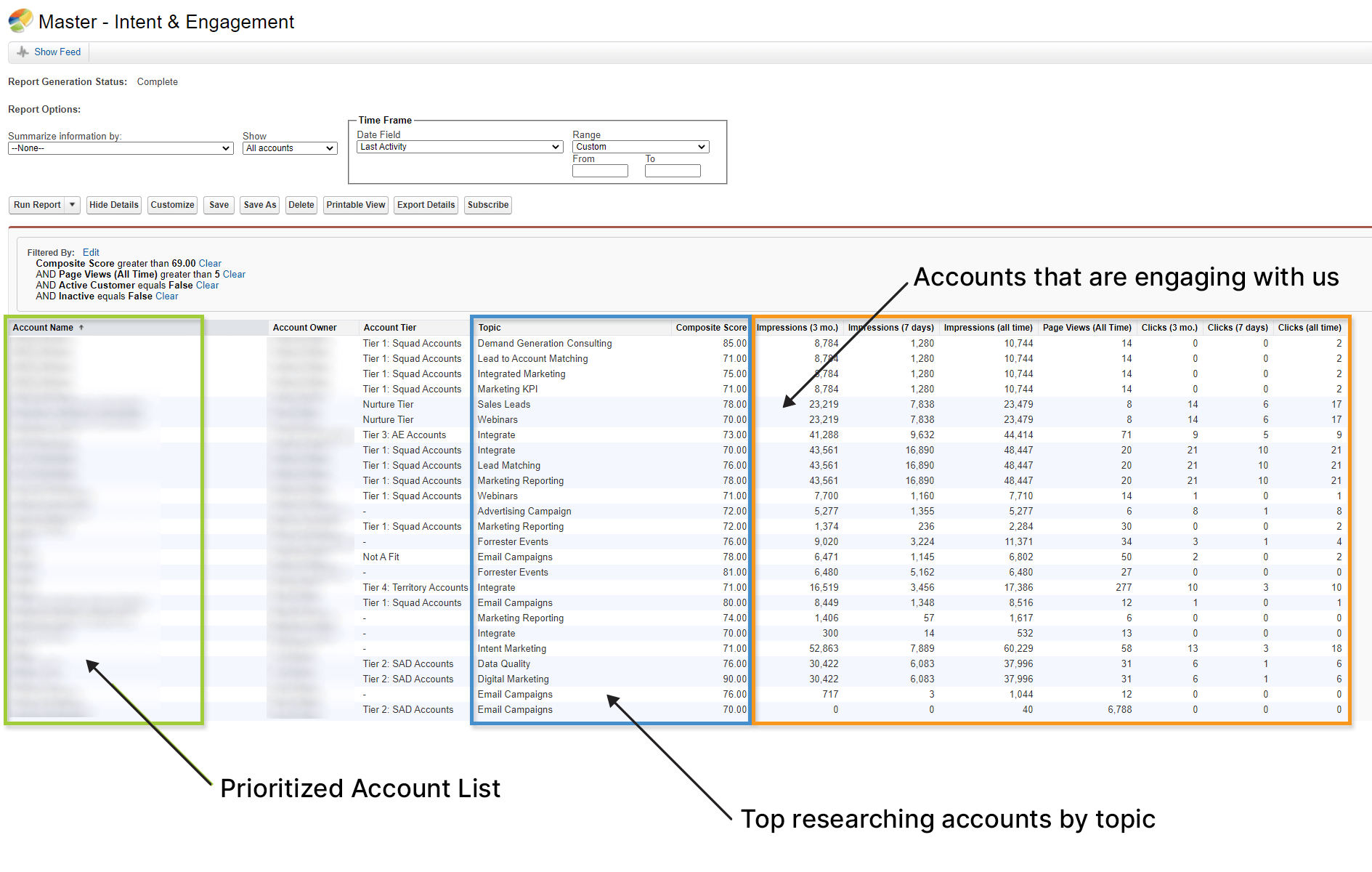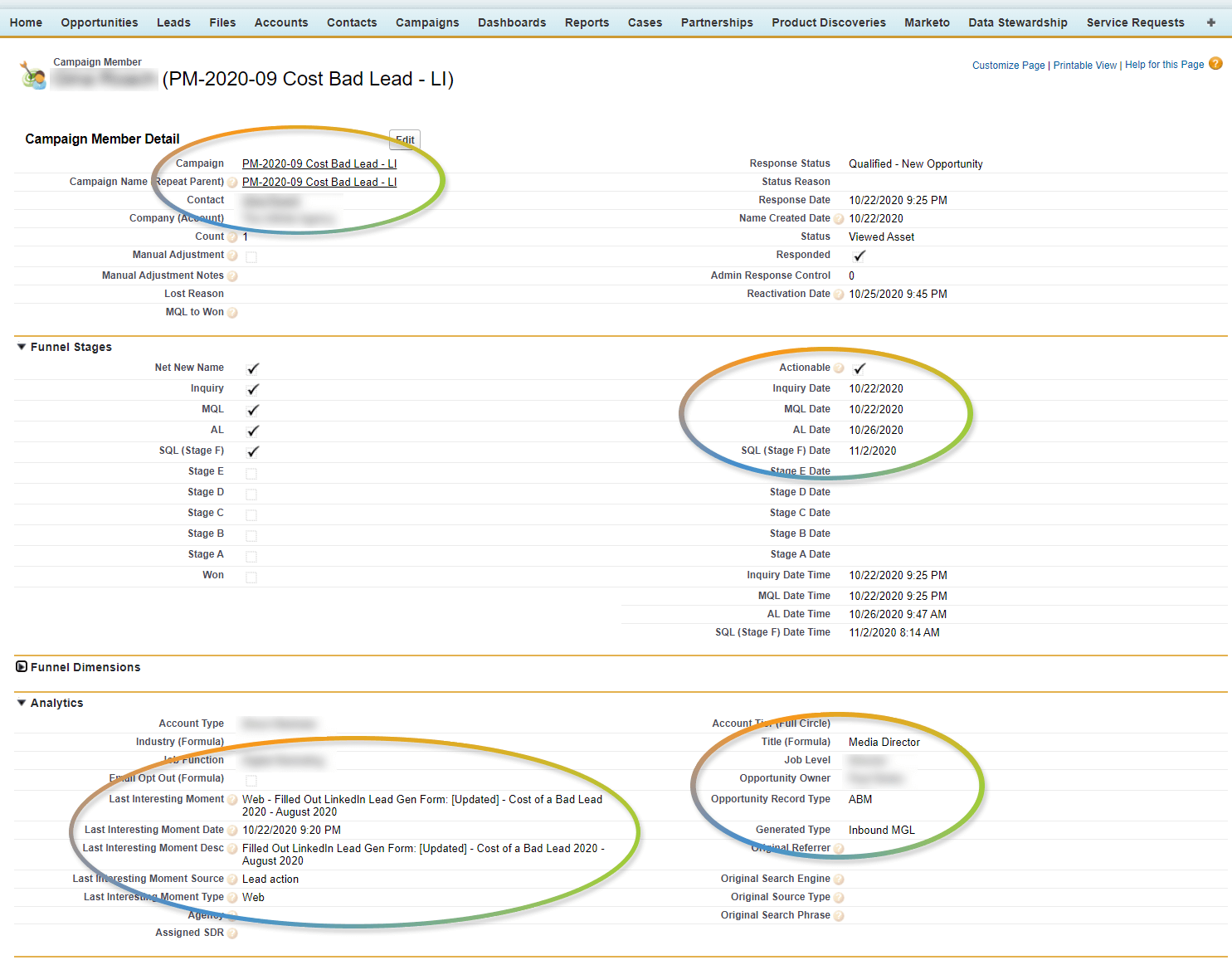90 Days to Precision Demand Marketing: Step 1
Ensure Marketable Connected Data
Getting your marketing data right is the single most important factor in the success of your demand campaigns. In this blog, “90 days to Precision Demand Marketing,” I’ll discuss how to have marketable, connected data across accounts and contacts, and ensure that the data is valid and compliant. I’ll define the meaningful data elements that should be populated on each object and provide a step-by-step tutorial you can use in your own efforts.
For the sake of this discussion, I am assuming you are using Salesforce and that you have a general understanding of how Salesforce works.
Step 1: Accounts and Contacts
Start by answering the following important questions about your accounts:
- What is my Total Addressable Market? How many accounts should I try to include? Work with your sales team to identify the industries, geographies, size, or special requirements that fit your organization. Consult internal teams to ensure you aren’t missing anything––or anyone.
- How many accounts do I have in my database? Do they align with your TAM? Without the right accounts your marketing efforts will be hampered. I knew a company with a TAM of around 5000 accounts, but whose database had over 25k accounts. This kind of mismatch between your buyers and your data causes nothing but pain for your marketing and sales teams.
- Are they the right accounts? Which ones am I missing? By knowing what you don’t know, you can focus your acquisition efforts on the accounts that you are missing and work to round out your database.
- Do we have duplicate accounts? Duplicates slow your pipeline and impede efforts to accelerate demand. Eliminate them.
- Who can create accounts, and do we have a good creation process? Without education and/or a process around this, your team will constantly struggle with bad data. Control and educate around the creation process.
- Who monitors any new accounts to ensure you have the right data? Ensure that all team members know who’s responsible and make sure the process is clear and efficient. As with account creation, this is about clearly defining roles and maximizing productivity. Connect with all involved to resolve any conflicts or confusion.
- What percentage of these accounts have the correct fields? Always strive to include domain, billing address, industry, number of employees, revenue, NAICS/SIC or DUN’s #s, target account, company parent or subsidiary.
It’s important to start a project to fix your account data. Do it now. Don’t wait. Set a requirement that 85% of all accounts have the key fields populated. If they do not, go fix it. No excuses.
Tech Recommendation: Tap a vendor like D&B to help identify and build out your accounts.
Next, for contacts, answer these questions:
- How many contacts do I have? In today’s market we know that it takes 20-25 marketing touches per-person and the buying committees can be as large as 25+ people. If you do the math, and you know that your TAM is 10,000 accounts and your buying committees are 25 people, then your database should be at least 250,000. You should also make sure that they are evenly spread across those accounts.
- How many leads do I have? Leads are a challenge as they do not have a home with an account. Put the process and tools into place to minimize leads and have your BDR and sales teams only work from contacts.
- How many duplicates do I have? Duplicates destroy data. Your sales team could be working on one person and your marketing automation is writing all of the data to another record. Kill all duplicates. Your database should have less than 1% duplicates.
- Do the leads and contacts have the right data?
- How many contacts fall into my key personas and buying groups? If you do not have the right buying groups on your accounts, you are wasting resources. Take the time to make sure that you have the right people on the right accounts.
- Who is opted in and compliant? Keep yourself out of hot water by making sure you are communicating with people who want to be communicated.
Once you understand your contact count, you need to identify and complete the critical fields on the contacts. Here are some examples:
- Job Title
- Company
- Job Function
- Job Level (usually stems from Job Title)
- Number of Employees (Lead)
- Target Account (Contact)
- Opted-In/Out
- Country
- State
Following your thorough review of the data, answer the following:
- Which accounts have the right personas and buying groups?
- Which need work?
At this point, you’ll probably need to start a project to clean up your lead and contact data. It’s worth it to hire an intern to build out your missing accounts with the right personas.
Tech Recommendation: To find the contacts for your accounts, look into ZoomInfo’s contact database. Connect ZoomInfo to your CRM and MA system.
We also recommend having a good strategy to auto-convert leads to contacts and then working from contacts on accounts.
Tech recommendation: Check out Ringlead. They have a great lead flow process to help you auto-convert leads to accounts when the data matches.
Your goal is to have the key fields populated on 85% of all your contacts. You should be turning your lead data about 20% a year. Avoid putting inaccurate or incomplete data into your marketing automation system. Bad data just makes it hard for your team to accomplish its goals.
Tech Recommendation: Integrate – we deliver the clean, compliant leads with the right titles on the right accounts.
Step 2: Buyer’s Journey
By getting your buyer’s journey data right, you get an understanding of where each person is in that journey. This is arguably the most important task, but also the hardest to accomplish in your CRM. Without this data, your CMO may have a short run at your company. So, how should you start?
When you are trying to engage people and accounts, the people you hope to engage aren’t necessarily in your system. They may or may not be a lead or contact or even an account. I like to look at both accounts and leads/contacts and ask the following questions:
- Which accounts are cold, researching, engaged, meeting or have an open opportunity?
- Which accounts are stuck in early-stage opportunities?
- Which leads/contacts are new, engaged, qualified, accepted, meeting, or have an open opportunity?
This data forms the foundation for a response-to-revenue reporting that will help your CMO defend the marketing spend. Build a list of questions you want to answer and find a business intelligence tool that helps you connect the dots.
Tech Recommendation: Full Circle Insights (FCI) structures Salesforce to help you capture the buyer’s journey data you need. FCI enables response-to-revenue and campaign attribution reporting.
This data will help inform how to treat your prospects along their buyer’s journey.
For example, here is the raw data from a priority account list as seen in our CRM. Here, we are showing accounts that are both conducting research on solutions like ours and have visited our website. Using this data, we have deployed a progressive programmatic advertising strategy, enabled a focused content syndication campaign, incorporated multi-stage email nurture, and enabled our SDR team to build and target these accounts. This is what we call teamwork!

Below is an example of the buyer’s journey that Full Circle Insights delivers. In this view we can understand the entire response-to-revenue process, from the initial responses through to the opportunity being created. This data gives us a detailed understanding of the key dates and status of the contacts and where they are in their journeys. With this data we can understand, at the contact level, where each buyer is in the journey.

At this point, combining both account intent and engagement data with the buyer’s journey data will give your SDR and sales team a prioritized list of accounts and people to follow up with. Doing so will make you a strong partner with the rest of the organization.
Step 3: Valid and Compliant Data
The final step in getting your data right is ensuring your data is valid. Is the email correct? Does the phone number work? Has the lead or contact agreed to receive marketing materials from you?
While compliance often gets pushed to the backburner, it is a critical aspect to understand about your data. After all, we are trying to build account and buyers’ journeys and deliver the best experience for our customers and prospects. There is nothing worse than communicating with people who told you to stop contacting them.
Tech Recommendation:Integrate’s Demand Acceleration Platform ensures your valid, compliant data is delivered directly into your Marketing Automation (MA) and CRM systems.
Next Up
These tips should form a strong foundation for a solid data strategy. We won’t lie – it’s not an easy process. But it is well worth the effort. Getting your data right is the foundation upon which you can start to execute an intelligent and connected buyer’s journey that reaches the right people at the right time with the right message.
In our next blog, we’ll dive into connecting your demand channels. So, stay tuned. To learn more, check out our on-demand webinar on “Precision Demand Gen: Understanding the 5 Building Blocks of Intelligent Buyer and Account Journeys.”









